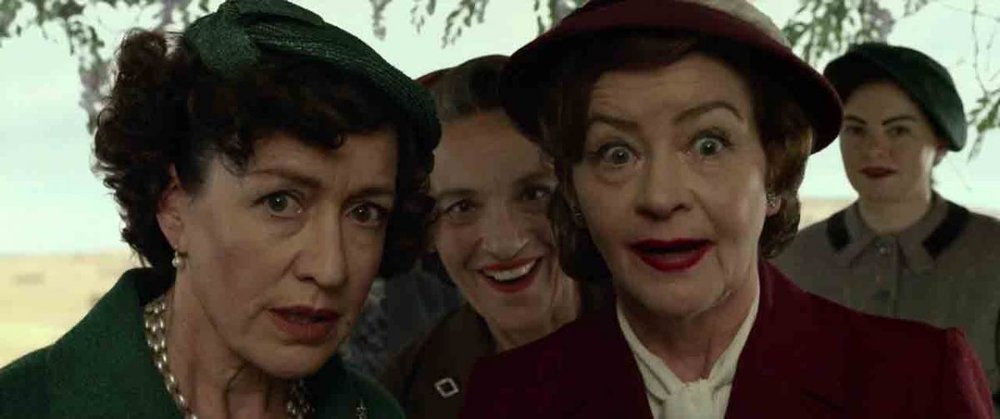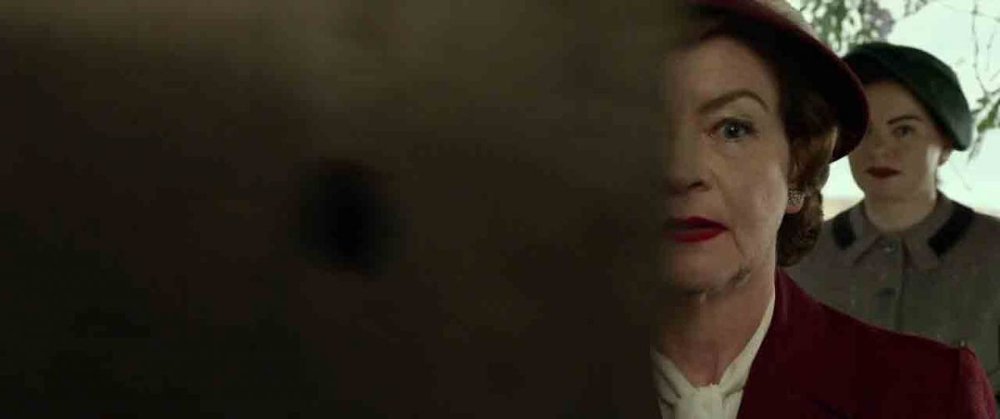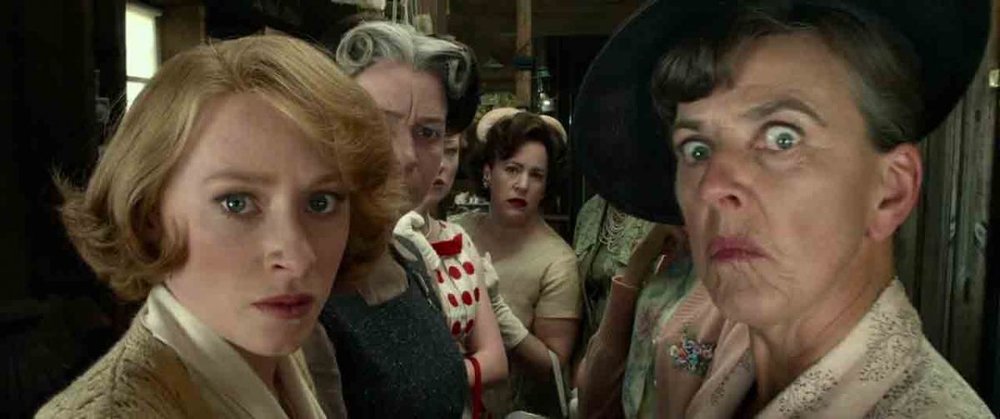
Mathew Collins
-
Posts
232 -
Joined
-
Last visited
Posts posted by Mathew Collins
-
-
Hi,
In the following interview DP Rodrigo Prieto says at 1.52 minute" Martin Scorsese didn't want
tracking mark on faces. That is the reason for witness cameras. Those cameras
were capturing only infrared, and tracking marks were only visible in infrared."
Could someone know this technique and what is DP talking about?
-Mathew Collins
-
 1
1
-
-
On 10/6/2011 at 7:47 PM, Steve Shaw said:
While not books (although you can print and bind the pdfs ;o) these documents may be of interest...
They have been written by Steve Shaw (me!) of Light Illusion.
Hope that are of help.
Hi Steve,
Is that pdfs moved to some other location?
-
Hi,
Why did the size of sun looks SMALL in the noon and BIG in the evening, even though
the distance of sun in the evening is greater than that in the noon?
Is it something related to depth ques?
-Mathew Collins.
-
Thank you Simon.
-
> http://www.brianpritchard.com/colour_films_with_unusual_sensit.htm
Thank you Simon.
Good information in the link. Magenta layer is sharpest and changed as top layer in positive films. But Kodak did not follow the same order in Negative films.
-
In the ECN-2 processing given in the link,
https://www.kodak.com/uploadedfiles/motion/h2407.pdf
The order of emulsion layers in Negative are in the order Yellow, Magenta, Cyan layers from the top to bottom.
But in KODAK VISION Color Print Film / 2383
https://www.kodak.com/uploadedfiles/motion/2383_ti2397.pdf
or in ECP-2E Processing document,
https://www.kodak.com/uploadedfiles/motion/h2409(2).pdf
The layers in the print film are given in a different order, Magenta, Cyan, Yellow .Any specific reasons for this change in order?
-
Just now, David Mullen ASC said:
You’re mixing up the concept of exposing the raw print stock with light versus passing light through the developed print. In the unexposed print stock, there are emulsion layers sensitive to colors that when processed form yellow, cyan, and magenta dyes. In the processed print, there can be areas with no dye, allowing white to be on the screen, or just one dye, or two dyes over each other, or all three dyes over each other. Unexposed film stock is opaque — processed film is semi-transparent.
When the white projector light passes through yellow dye, you get yellow on the screen, when it passes through cyan, you get cyan, when it passes through magenta, you get magenta. But when you have two dyes over each other:
yellow + magenta = red
yellow + cyan = green
cyan + magenta = blue
and
yellow + magenta + cyan = black
This is a subtractive process, the dye in the print is filtering out certain color wavelengths.
David, Thanks for the information. Every time your one replay clears many questions.
-
Just now, David Mullen ASC said:
https://en.m.wikipedia.org/wiki/Subtractive_color
Actually the color dyes in a print are yellow, cyan, and magenta in order to create all the colors.
When projector light passes through the print, does it have to pass thru 3 layers,
first, Green sensitive emulsion ie; Magenta Layer
Next, Red sensitive emulsion ie; Cyan layer
and finally Blue sensitive emulsion ie; Yellow layer
Then no light will be passed. I think there is something wrong with my understanding.
-
Just now, Phil Rhodes said:
Print stocks were (well, still are) made to have very low sensitivity, so they have extremely fine grain, and there may be some tweaks to the colour response and contrast to ensure things come out looking nice. Other people may be able to say more about that. At its core, though, it's all colour film producing a negative image using broadly the same basic chemistry.
P
Thank you Phil.
How would the image formed on screen, when white light passed through the Y,M,C layers of release print?
-
Hi,
A Question related to workflow of between camera negative and release print.
The Inter Negative(I.N.) is printed to Release print.
While processing the release print, what layers of dye would be present in Release prints?
Is it same layers as I.N.? Yellow, Magenta and Cyan layers?
How the color reproduction happening in screen while going thru projector?
-Mathew Collins.
-
On 7/7/2019 at 9:09 PM, David Mullen ASC said:
"Film Technology in Post Production" by Dominic Case.
Thank you David.
-
On 7/3/2019 at 5:03 PM, Mark Dunn said:
"How films were made and shown" by Brian Pritchard.
Thanks much Mark.
-
Please suggest some good Books or Links to refer about Film processing to Printing (both Black & White and Color).
-Mathew Collins
-
I tried to understand few things while watching movies.
1. Camera moving towards or away from character, makes the image size big/or small create some impression on the viewer. When the size of the character fills the frame viewer may feel that the character is superior and when and when character is isolated in frame, he is inferior.
2. When camera is moving along with character the support is given to character from story point.
3. I could not really understand the situations to go for Dolly Vs Panning.
4. When camera is static and character is, no support given from story point, but character is trying to do something on his own.
-
Hi,
I have few questions about camera and character movement which psychologically communicating to viewer,
1. Camera moving towards while Character is moving (image size is increasing and depth-of-field is decreasing).
1. Camera moving away from Character while Character is moving(image size is decreasing and depth-of-field is increasing).
2. Camera moving along with character and Character moving towards or away from camera(image size increasing/decreasing).
3. Camera is moving along with Character (any type of camera movement)(no difference in image size).
3. Camera is moving along with Character(dolly vs panning).
4. Camera is static while Character is moving (image size increasing/decreasing/no difference).
5. Camera is moving while Character is static (image size increasing/decreasing/no difference).
-Mathew Collins
-
Thank you all. That clears lot of questions.
I was confused about key + fill : fill which is given in many books.
Now I could go with Key: Fill .
-Mathew Collins
-
My understanding was Contrast/ Lighting Ratio is, key + fill : fill.
Some of the books gives the ratio as , Ex: Set Lighting Technician's Handbook, Fourth Edition Film Lighting Equipment by Harry C. Box-page 112
key + fill : fill
-Mathew Collins.
-
Hi,
A question about lighting ratio, Key+Fill : Fill,
Key is 100 FC, Fill is 100, then lighting ratio is 2:1
Key is 200 FC, Fill is 100 FC then lighting ratio is 3:1
Key is 400 FC, Fill is 100 FC then lighting ratio is 5:1
Key is 800 FC, Fill is 100 FC then lighting ratio is 9:1
Key is 1600 FC, Fill is 100 FC then lighting ratio is 17:1
Something wrong with my calculation?
Is it possible to arrive at 4:1, 6:1, 7:1, 8:1 ratios?
Thanks,
Mathew Collins.
-
In western culture right is supposed to be the dominate side. Robert McKee (the script guru) discussed this in his lecture on story with Ingrid Bergman tending to be on the right, while Humphrey Bogart is on the left at key moments in "Casablanca".
Is the lecture available in video or pdf?
-
Thank you David, Macks and Brian,
I was trying to find out the meaning. While watching films, characters/vehicles enter into the frame through,
-right side-lower part
-left side-lower part
-lower side
-upper side
-
Hi,
I have seen vehicles/characters entry into the shot from the Left/ Right/ Lower/ Upper side of the frame.
Any specific meaning/metaphor for the sides of frame?
-Mathew Collins.
-
The Dress maker is comedy, Drama movie.
In the second set of pictures, When Judy Davis's character appear to from lower bottom of the frame(1st picture), the other ladies looks into the lens or just to the side of the lens.
These pictures are from another scene. Kate Winslet's character opens the door. Lady characters look onto the lens or just to the side of the lens.
Donald McAlpine used 'look onto the lens or off to the side of the lens' technique in other scenes as well.
-
-
David,
While watching 'Silence of the Lambs', my understanding was Jodie Foster and Anthony Hopkins are looking into the lens.
Hi Brian,
OK. very tight eye line is possible if an actor play to a piece of camera tape on the matte box.
But I had a misunderstanding that if the character is directly talking to another character, the second character has to stand close to the side of the mattebox and that is maximum 'tight eyeline' is possible.
As you said, if actor play to a piece of camera tape(sicked inside matte box close to the lens) very tight eye line is possible, than the actor stand close to the matte box.







Tracking mark on faces - DP Rodrigo Prieto's interview
in General Discussion
Posted
Could you explain about " tracking marks on the faces "? What is that used for?